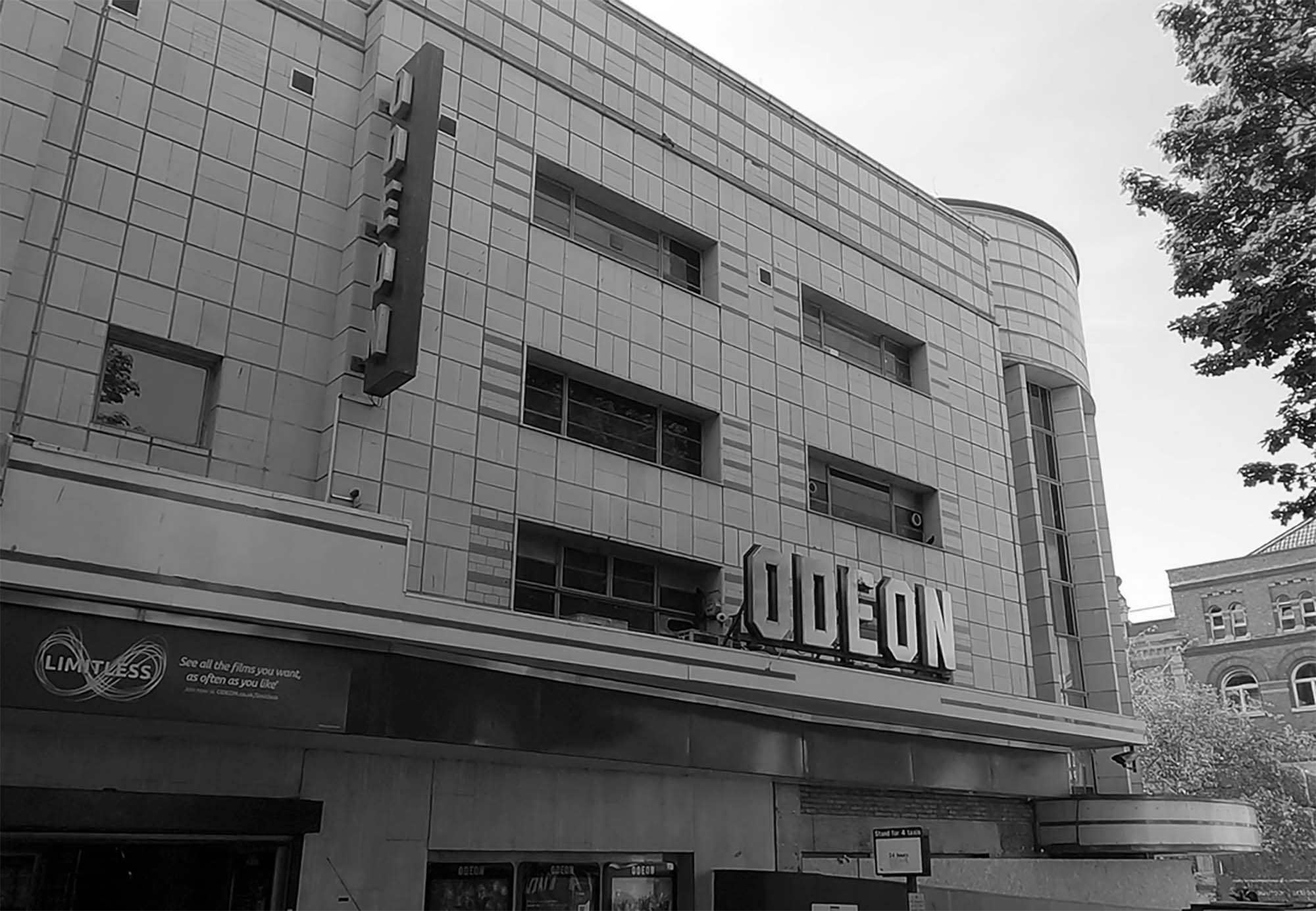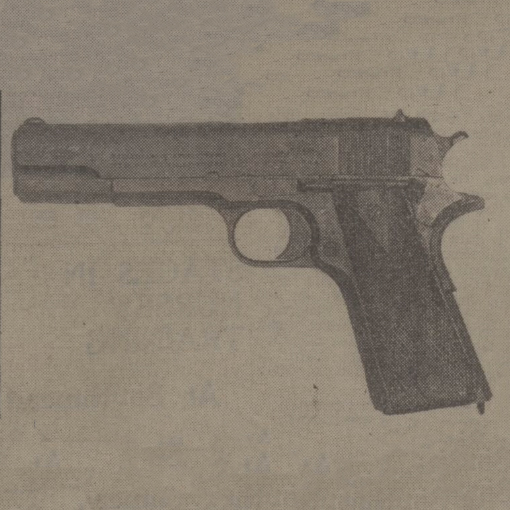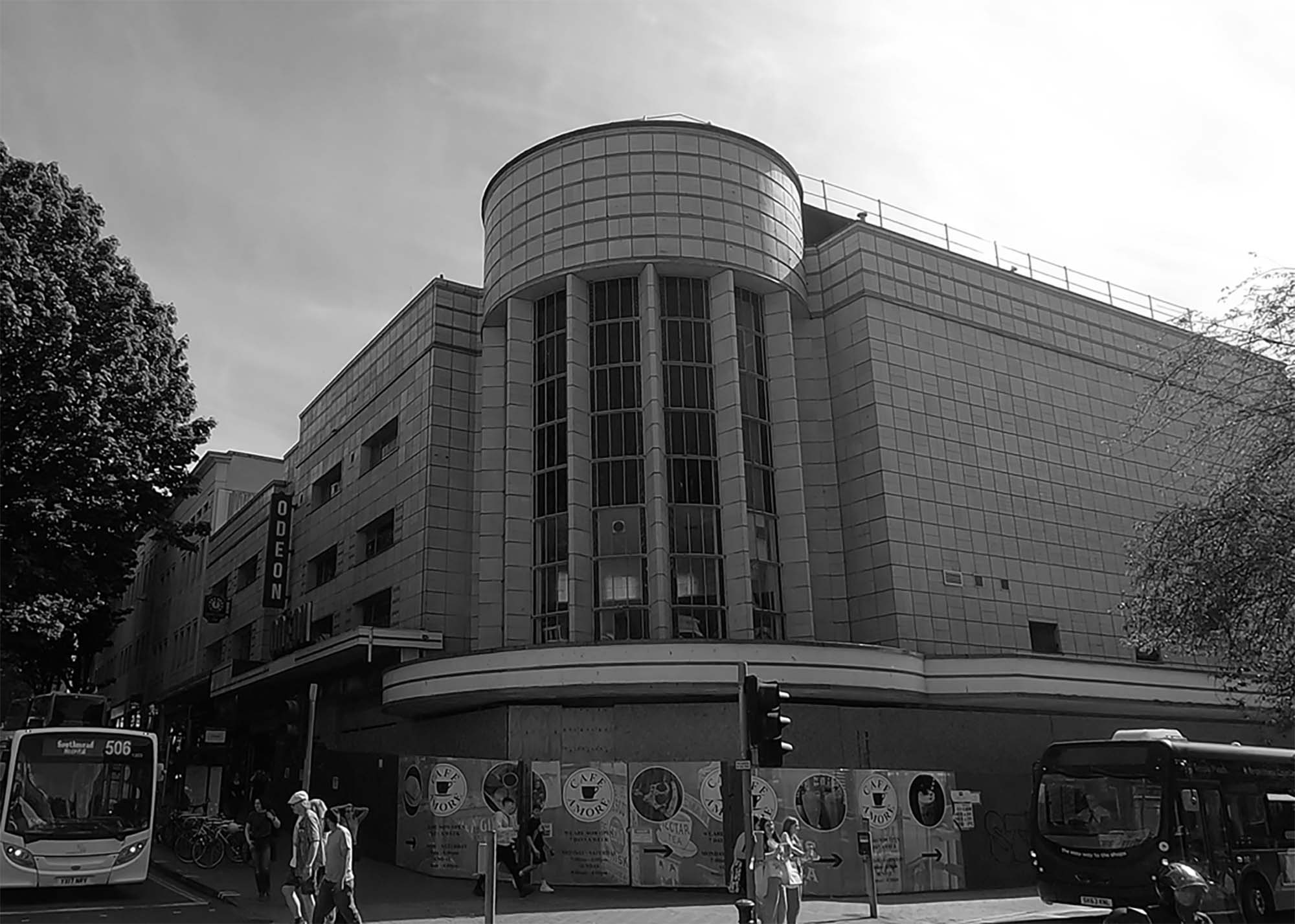

Age: 33
Sex: male
Date: 29 May 1946
Place: Odeon Cinema, Union Street, Bristol
Robert Nelson Parrington Jackson was shot in the head at the Odeon Cinema in Bristol. He was the cinema manager.
He was found shot on the Wednesday night 29 May 1946 in his office. He was taken to the Bristol Royal Infirmary but died before regaining consciousness.
It was said that he was shot during the film 'The Light That Failed', between 6.30pm and 6.45pm during a shooting scene which had five shots in it and that the shot that was heard was actually real and the one that killed Robert Jackson.
The pathologist said that his cause of death was cerebral laceration following the passage of a bullet through his skull. It was reported that at least two important pieces of information were expected to come from the post-mortem, first the distance from which the fatal shot was fired, and secondly the angle of entry that the bullet was fired from. When the Home Office Pathologist summarised his report at Robert Jackson's inquest on 3 August 1946, he said that there was a fire-arm wound in Robert Jackson's head, the entry being three inches above his right eye and that the exit point was by his left eye, traversing the brain and left eye and causing a fracture of the skull and laceration of the brain and cerebral haemorrhage. He noted that there were two other minor bruises on his forehead, but that they didn't contribute to his death.
The pathologist said, 'The course of the bullet was from above downwards, from right to left, and from behind forward. There was no burning on the face, no blackening, only two particles of burnt powder on the face'. The coroner then asked, 'As there would be if it was a close discharge?', and the pathologist replied 'Yes'. The coroner then asked the pathologist if he thought that it was possible that he had inflicted the wound himself and he said that in his opinion it was not a self-inflicted wound.
The pathologist also confirmed that he believed that the weapon that he used was a heavy calibre weapon.

The police said that they had reports of sightings of two people who were seen in the balcony lounge area of the cinema, one being described as 'the man with pursed lips', who was seen reading a newspaper near the cinema office on the day before the murder, Tuesday, and the other, a 'dishevelled man' who was seen running out of the gallery stairs minutes after the shooting on the Wednesday night, were the same person. They put forward an appeal for the two men but had no response.
The police later received a detailed description of the man that was seen in the lounge on the Tuesday afternoon between 5.30pm and 6pm from an usherette that he spoke to and who told her that he was waiting for someone. The usherette said that he was between 30 and 35 years of age, about 5ft 7in tall, with a medium build, with what was believed to be dark hair, a longish face, a ruddy complexion and clean shaven. She said that he was wearing a dark suit which she believed was navy blue, which was well worn and shiny in places with a white collar and a dark coloured tie. She said that she believed that he was hatless and had been carrying an old mackintosh coat.
The police said that they thought that the murderer had escaped from the manager’s office over girders beneath the cinema balcony and took dust and cobweb samples from them for examination.
A doorman at the Odeon Cinema who was on duty on the night of 29 May 1946 said that he saw Robert Jackson several times during the evening. He said, 'I saw him going upstairs about 6.30. He had been to the cash desk. He was going to his office which is on the first floor. A minute or two afterwards someone came to me with some lost property which he had to pick up in the stalls. I took it upstairs intending to give it to Mr Jackson. His door was shut, and I waited because I thought he would be checking the money and putting it away. Shortly after, he came out and I handed the purse to him. He went back into the office and I went down to the forum. A few minutes after I heard a bang and I immediately went up to the balcony to make inquiries into the cause of the bang. I did not go into his office but walked round the balcony. Shortly after I went for the police'.
The cafe supervisor at the Odeon Cinema said that she was there on the evening of 29 May 1946 at about 6.45pm. She said 'I was in the balcony cafe which is on the same floor as Mr Jackson's office. I heard a bang and asked the doorman what had caused it. I then went back into the cafe and the next thing a woman called me from the kitchen. She told me to go to Mr Jackson's office to see if he was ready for his tea. I went and found the door shut. I knocked and got no answer. I knocked again and then opened the door.'. When the coroner asked her what she saw, she said, 'I found Mr Jackson lying just inside the door on his right side'. When she was asked whether he had been wounded in the head, she said, 'Yes, sir'. When the coroner asked her whether he spoke, she said, 'No, sir'. She said that she then ran back and told the manageress.

In a search for the murderer the police inspected the registers at scores of hotels in Bristol and checked up on a number of people that had arrived in the city on the Tuesday and the Wednesday.
It was later suggested that the gun that had been used to shoot him was the same gun used to shoot Muriel Drinkwater in Penllergaer Woods on 27 June 1946. The police had found one used .45 pistol cartridge for a Colt automatic pistol in Robert Jackson's office.
However, an American Colt automatic pistol was later found in a static water tank towards the end of August 1946 and it was thought that it might have been the murder weapon and the police released a photograph of it in the newspapers and appealed for anyone that knew anything of it to come forward. The gun was described as a Colt automatic of the type issued to the American Army and the police said that tests were being done to determine whether it was the gun that had been used to fire the bullet that killed Robert Jackson and that their investigation had taken them to America.
The police said that they thought that there were two theories behind his murder, the first being that he had gone back to his office and had surprised an intruder who had gone there to commit a robbery, and the second that he had had an argument with a person there who had then shot him.
It was noted that no money was taken from the office or safe and that the key to the office safe was still in Robert Jackson's pocket.
At the close of his inquest on 31 August 1946 a verdict of, 'Death due to murder by some person unknown' was returned.
Robert Jackson had just returned to work after six years in the Royal Navy during the war. He had acted in movies, driven across the United States and worked as a radio announcer.
He had a four-year-old daughter.

It was later reported that a gangster confessed to Robert Jackson's murder on his deathbed in 1989, saying that he had shot him whilst trying to rob the cinema. It was suggested that his confession was feasible as there would have been the equivalent of £25,000 (in 1989) in the safe at the time.
It was later reported that the cinema building, which was later turned into a clothes store had reports of paranormal activity thought to be due to the murder and was exorcised twice.
see www.flickr.com
see Bristol Live
see Bristol 24/7
see Western Daily Press - Tuesday 04 June 1946
see Western Daily Press - Saturday 03 August 1946
see Western Daily Press - Saturday 31 August 1946
see Manchester Evening News - Monday 03 June 1946
see Aberdeen Press and Journal - Monday 03 June 1946
see Belfast Telegraph - Saturday 03 August 1946
see Hull Daily Mail - Saturday 01 June 1946
see Liverpool Echo - Saturday 01 June 1946
see Gloucestershire Echo - Monday 03 June 1946
see Dundee Courier - Monday 03 June 1946